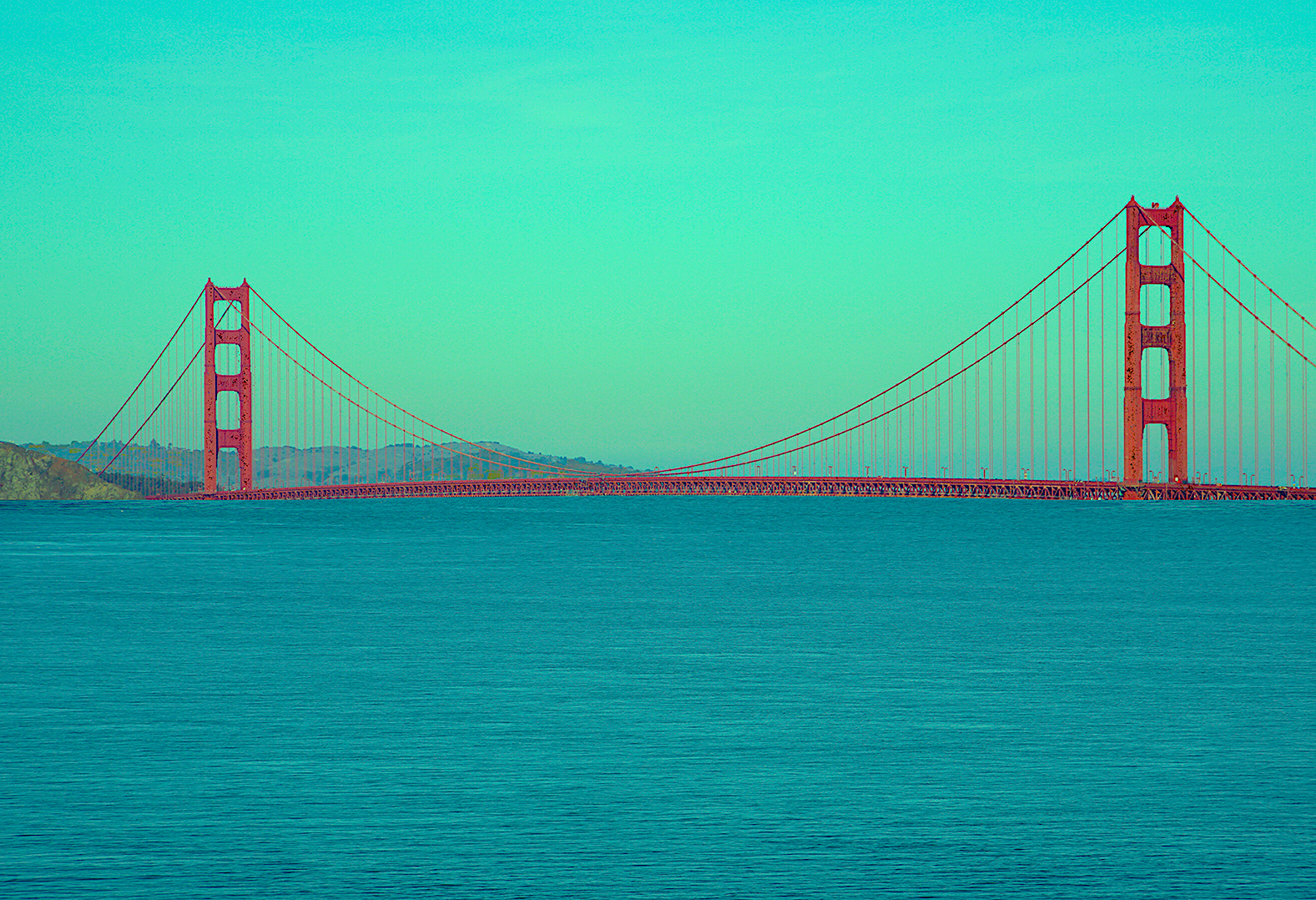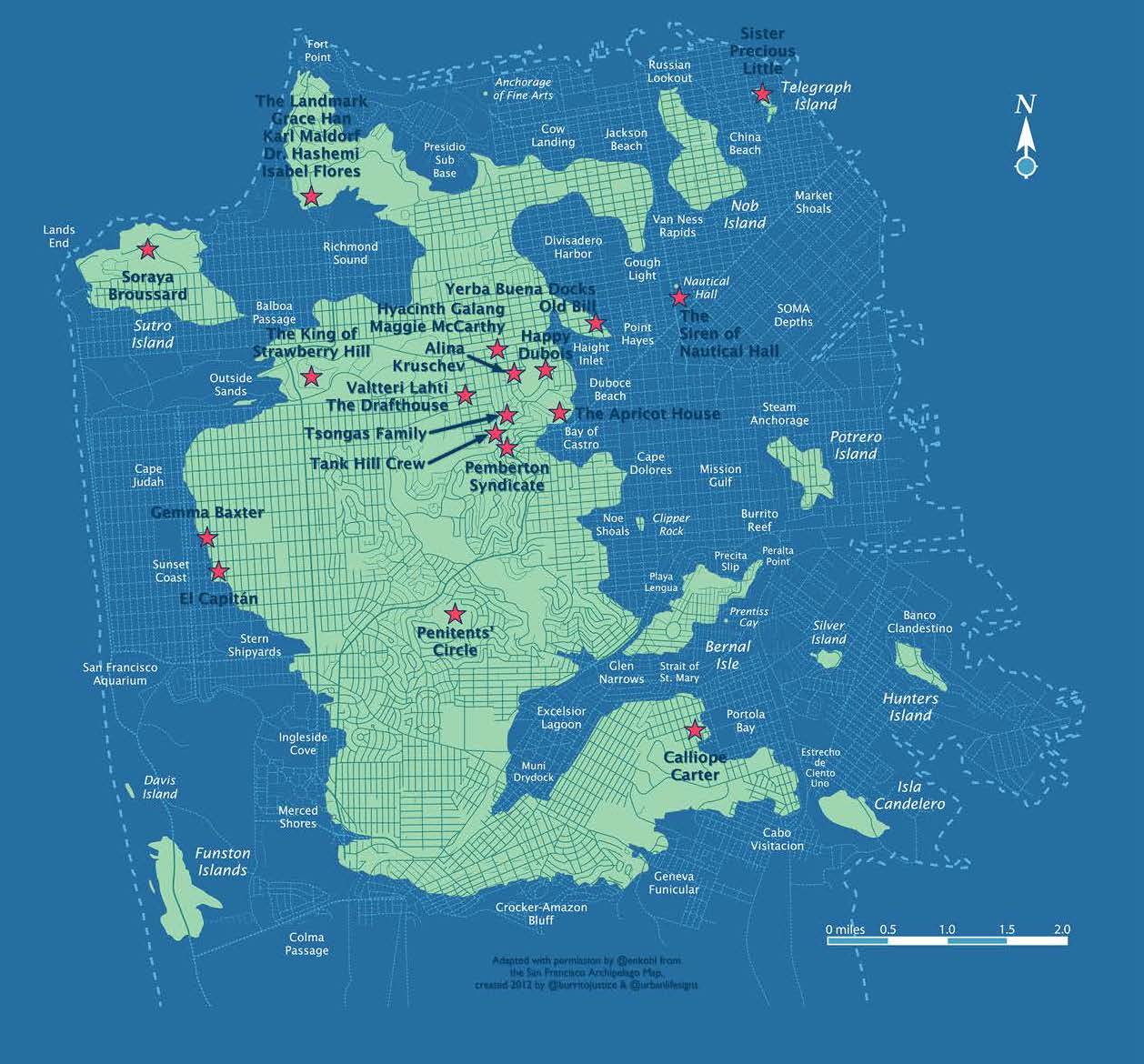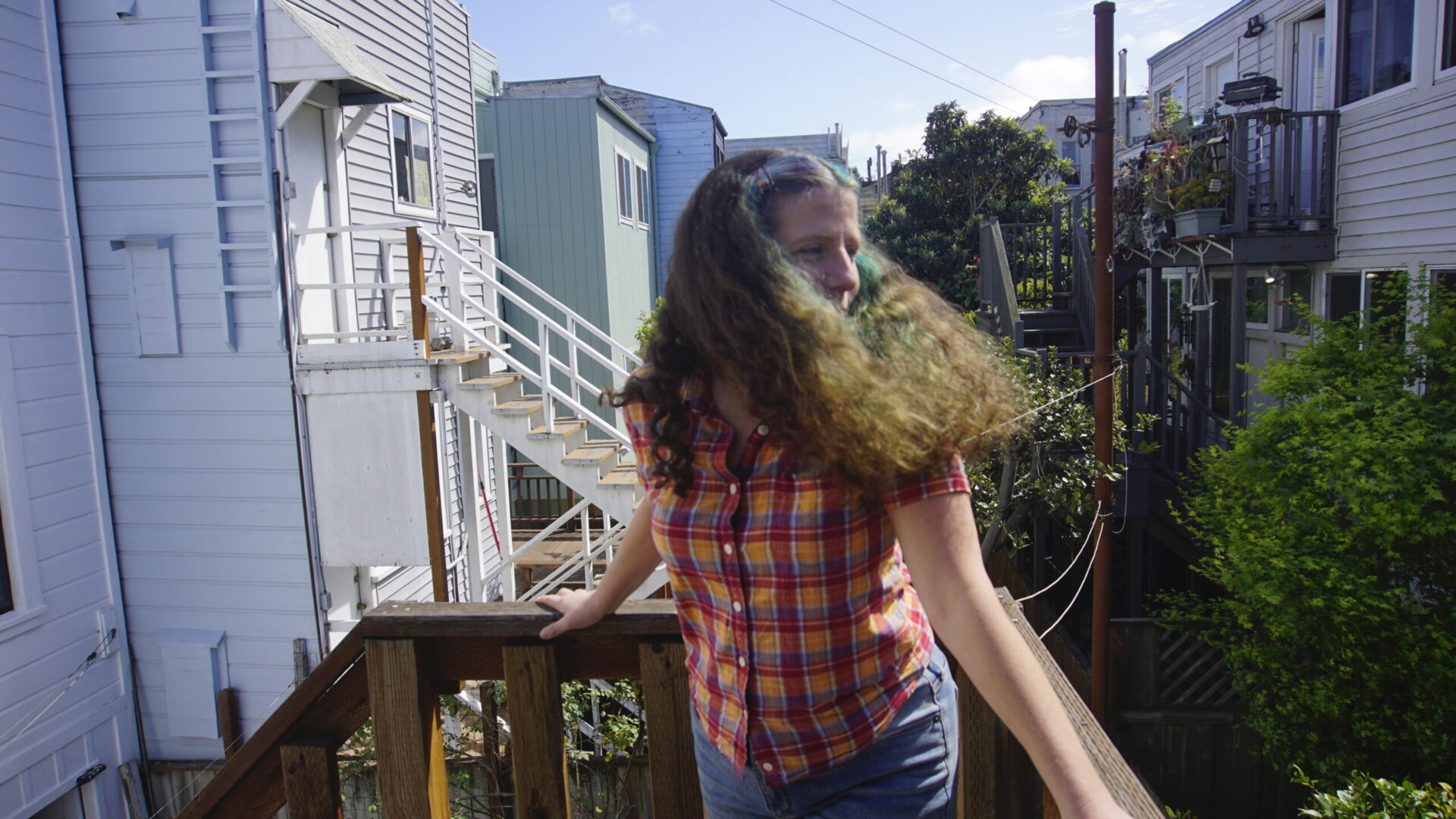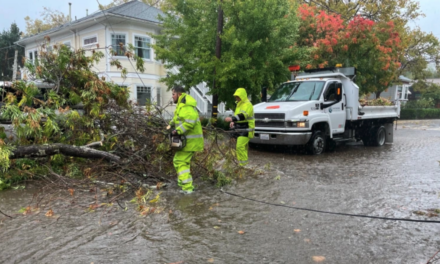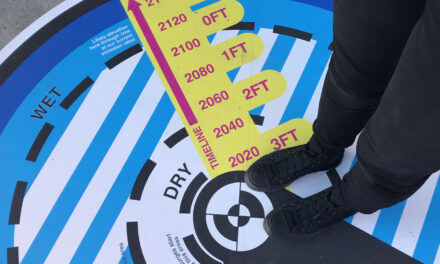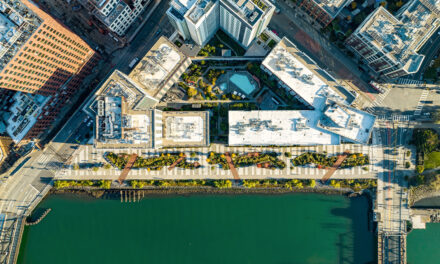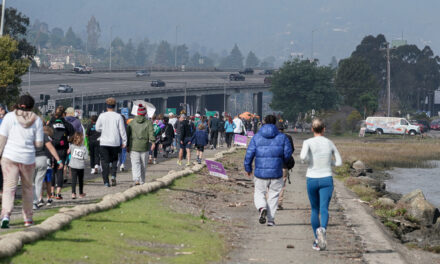Radio Tale of a Submerged City
On a soft, foggy San Francisco morning, Soraya Broussard wakes up, stretches, and smiles as she looks out from her hilltop near Land’s End over the calm ocean water covering Golden Gate Park. At the Duboce Triangle, which is now a beach, the Tsongas family begins their day as we hear the town gossip about them, while a nearby pandemic recluse emerges to collect the basket of fruit that the neighboring house of orphans have left for her.
These are scenes from The Forever Wave, a locally-produced radio play that takes place in a world where the sea level has risen 200 feet and turned San Francisco’s hills into an archipelago of islands.
“The idea of a drowned San Francisco after significant sea level rise had been on my radar for a long, long time,” says Nicole Gluckstern, the playwright and director.
San Francisco’s hills left as islands after 200 feet of sea level rise, adapted from the San Francisco Archipelago Map (2012).
The Forever Wave, closely based on the structure of the 1954 Welsh radio play Under Milk Wood, has over 60 characters voiced by 12 actors. The narrative floats in and out of their thoughts and stories over the course of 24 hours. Characters range from drag queen nun Sister Precious Little at Coit Tower on Telegraph Island, to a reminiscing captain on a fishing boat, to a group of hard-working health care workers at the Presidio which has returned to its origins as a hospital. As in Under Milk Wood, Gluckstern flows her narrative from dreams and spirits into scenes of everyday life. The audience hears from both the dead and the survivors of a massive tide that has submerged most of San Francisco, and listens to a new society that is unfettered by the raging inequities of our present day.
“I wanted to transpose Under Milk Wood to a kinder, gentler San Francisco,” explains Gluckstern. “There are multiple voices from the past and present, and inter-generational voices are very important to me.”
For San Francisco history buffs there are some clear nods to the colorful past in this drowned future, from the parrots of Telegraph Hill, to the Coit Tower nun based on the Sisters of Perpetual Indulgence, to an Emperor Norton-esque character called the King of Strawberry Hill who creates his own money.
Unlike many climate fiction and even non-fiction works that strongly emphasize the worst climate change impacts and their sobering aftermath, The Forever Wave refreshingly explores the opportunities that rebuilding with a blank slate offers.
“I definitely wanted this to be less about the disaster and more: what are you going to do after the disaster?” Gluckstern says. “How are we going to survive it as individuals or as a society?”
The playwright Nicole Gluckstern at home in San Francisco. Photo: John Rock.
While Gluckstern freely admits that 200 feet of sea level rise by 2070 is implausible, it was inspired by an infamous sea level rise map that San Franciscan cartographers Burrito Justice and Brian Stokle created in 2012. For The Forever Wave, Justice and Gluckstern created a new version with the islands and communities from the play (see above).
The actors, audio engineers and sound designers were all pulled together through Gluckstern’s connections from decades of work in the Bay Area theater scene, including narrators Nathaniel Justiniano and Megan Trout. The play opens with “The Gates”, a haunting tune by San Francisco legend Mark Growden, who wrote the song as a direct response to Hurricane Katrina, followed by the more optimistic “Esperanza” by the Mission District-based Banda Sin Nombre.
The Forever Wave debuted in March 2023, playing for several months on community radio stations around the Bay Area, from KWMR in West Marin to KSFP in San Francisco to KACR in Alameda. Gluckstern and the play are now touring the international Fringe Festival circuit as a digital, on-demand production. They participated in the Philly Fringe Festival in September and are currently at the Melbourne Fringe through October 22.
Other Recent Posts
Gleaning in the Giving Season
The practice of collecting food left behind in fields after the harvest is good for the environment and gives more people access to produce.
New Study Teases Out Seawall Impacts
New models suggest that sea walls and levees provide protection against flooding and rising seas with little effect on surrounding areas.
Oakland High Schoolers Sample Local Kayaking
The Oakland Goes Outdoors program gives low-income students a chance to kayak, hike, and camp.
Growing Better Tomatoes with Less Water
UC Santa Cruz researchers find the highly-desired ‘Early Girl’ variety yields more tomatoes under dry-farmed conditions.
Santa Clara Helps Homeless Out of Harm’s Way
A year after adopting a controversial camping ban, Valley Water is trying to move unsheltered people out of the cold and rain.
The Race Against Runoff
San Francisco redesigns drains, parks, permeable pavements and buildings to keep stormwater out of the Bay and build flood resilience.
Learning the Art of Burning to Prevent Wildfire
In Santa Rosa’s Pepperwood Preserve, volunteers are learning how controlled fires can clear out natural wildfire fuel before it can spark.
Martinez Residents Want More Than Apologies — They Want Protection
After a 2022 release of toxic dust and a February 2025 fire, people in the northeast Bay town are tired of waiting for safety improvements.
Weaving Fire Protection Out Of What’s Already There
A new Greenbelt Alliance report shows how existing vineyards, grasslands, and managed forests can slow wildfire and save vulnerable homes.
Fall Plantings Build Pollinator Habitats in Concord
Community groups, climate advocates and a church are coming together to plant pollinator gardens as monarchs, bees see population declines.






